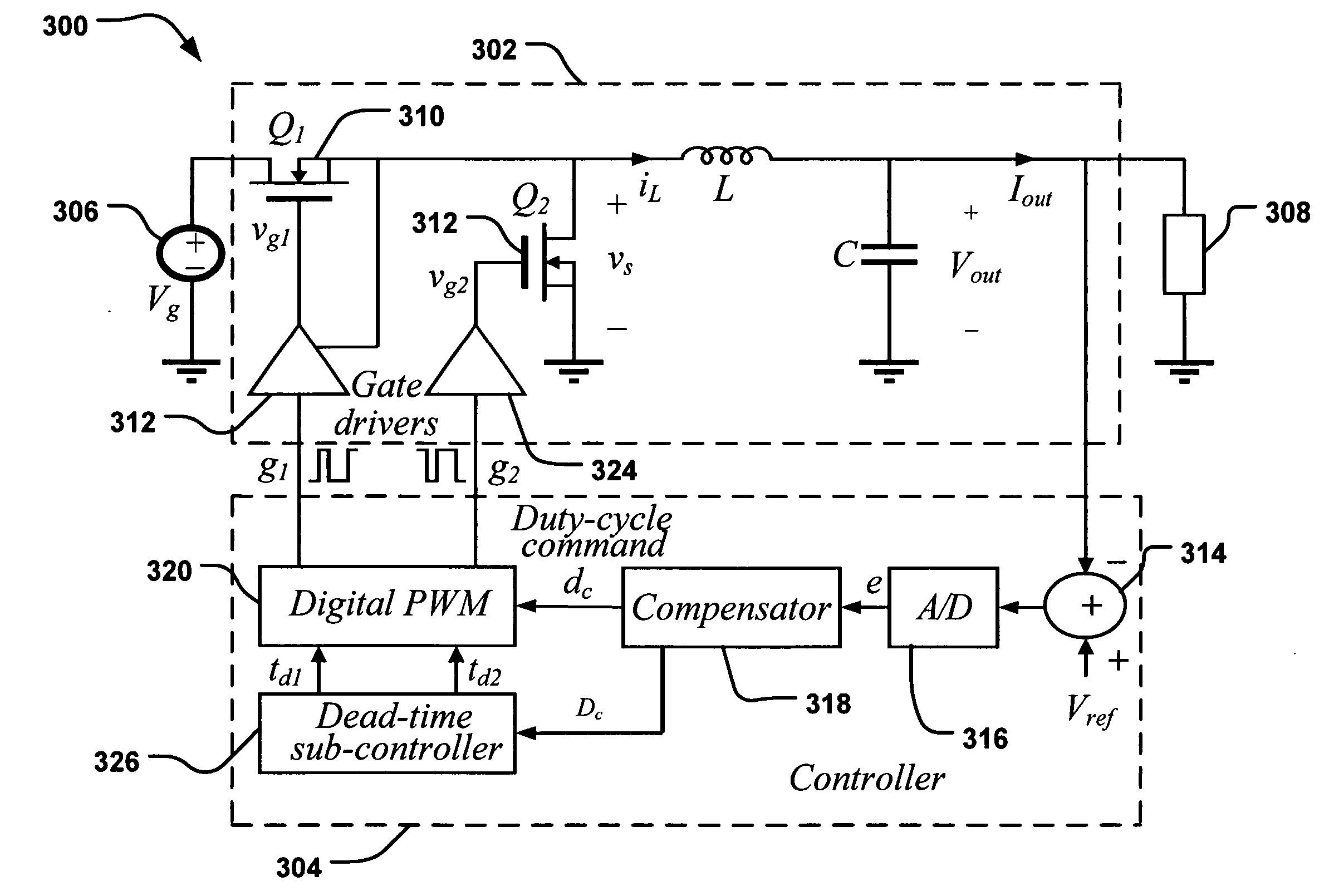Determining dead times in switched-mode DC-DC converters
a converter and dead time technology, applied in the direction of electric variable regulation, process and machine control, instruments, etc., can solve the problems of large current spikes through the device, severe degradation of efficiency, and more adverse penalties for converter efficiency, so as to improve the efficiency of switched-mode dc-dc converters, improve the efficiency of dc-dc converters, and achieve near-optimum efficiency of converters. , the effect of improving the efficiency of dc-dc converter
- Summary
- Abstract
- Description
- Claims
- Application Information
AI Technical Summary
Benefits of technology
Problems solved by technology
Method used
Image
Examples
Embodiment Construction
[0037] Controllers for use in determining dead-times of control signals for switched-mode DC-DC converters comprising synchronous rectifiers or other complementary switching devices are provided. While particular implementations of controllers and DC-DC converters are described in particular detail, one skilled in the art would readily recognize that other types of converters and controllers may be used within the scope of the present invention. For example, a controller may be implemented in (1) any number of hardware implementations using custom digital logic, such as in digital logic implemented on one or more programmable logic chips (e.g. a field programmable gate array (FPGA) or complex programmable logic devices (CPLD)), application specific integrated circuits, or custom digital or mixed-signal controller chips; (2) any number of software implementations, such as using microcontrollers, microprocessors, or digital signal processors (DSP) that execute a dead-time determinatio...
PUM
 Login to View More
Login to View More Abstract
Description
Claims
Application Information
 Login to View More
Login to View More - R&D
- Intellectual Property
- Life Sciences
- Materials
- Tech Scout
- Unparalleled Data Quality
- Higher Quality Content
- 60% Fewer Hallucinations
Browse by: Latest US Patents, China's latest patents, Technical Efficacy Thesaurus, Application Domain, Technology Topic, Popular Technical Reports.
© 2025 PatSnap. All rights reserved.Legal|Privacy policy|Modern Slavery Act Transparency Statement|Sitemap|About US| Contact US: help@patsnap.com



